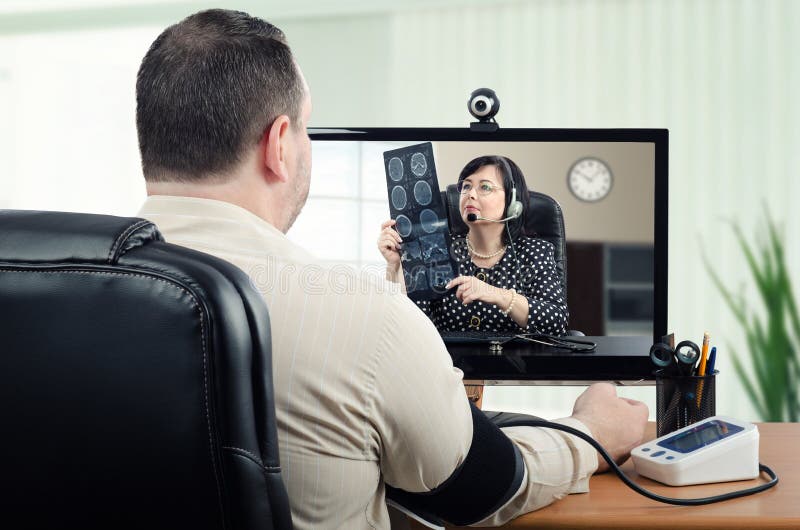Teledoctors: Linking the Gap In Between Individuals and Doctor
The development of teledoctors represents a substantial change in the medical care landscape, providing services to long-lasting availability problems faced by people and suppliers alike. By incorporating telemedicine right into typical methods, medical care systems can get to remote and underserved populaces, offering critical clinical appointments without the obstacles of distance and traveling. This paradigm change not only improves patient involvement but additionally enhances source allowance for service providers. Nonetheless, the widespread fostering of teledoctors elevates essential inquiries about the sustainability of such practices and the effects for future healthcare distribution. What challenges lie in advance in guaranteeing this model's efficiency and equity?
Increase of Telemedicine

The rise of telemedicine is also fueled by the need for economical healthcare. Healthcare systems around the world are under stress to minimize costs while maintaining top quality treatment, and telemedicine uses a feasible option. By decreasing the requirement for physical check outs, telemedicine reduces overhanging expenses for healthcare centers and inevitably reduces the financial worry on individuals.
Additionally, the COVID-19 pandemic worked as a driver, accelerating the fostering of telemedicine practices. Social distancing actions and the need to decrease direct exposure risk demanded a shift in the direction of remote assessments, motivating regulative bodies to adjust and support telehealth solutions. This shift has not only tried and tested telemedicine's effectiveness yet also its possible to evolve as a staple component of contemporary healthcare systems.
Benefits for People
As telemedicine continues to improve medical care delivery, individuals stand to gain dramatically from this transformation. Largely, telemedicine boosts ease of access, enabling people in underserved or remote areas to seek advice from medical care companies without the demand for extensive travel. This is especially valuable for individuals with movement problems or those living in rural areas where medical care centers might be scarce. Telemedicine likewise uses individuals the ease of receiving medical guidance and therapy from the convenience of their homes, reducing the time and cost associated with traveling to a healthcare facility.
Furthermore, telemedicine supports connection of care by helping with regular follow-ups and tracking, which are essential for handling chronic conditions. People can conveniently set up consultations and gain access to medical care solutions outside standard office hours, accommodating their active way of lives. This flexibility leads to boosted individual interaction and adherence to treatment strategies, potentially resulting in far better health and wellness outcomes.
In addition, telemedicine can assist mitigate the danger of infection transmission, a concern enhanced by the COVID-19 pandemic. By lessening the need for in-person brows through, individuals can avoid jampacked waiting rooms and lower exposure to transmittable diseases. Eventually, telemedicine encourages clients by giving timely, reliable, and personalized medical care services.
Benefits for Service Providers
For doctor, telemedicine supplies significant benefits that enhance the efficiency and reach of their method. By leveraging electronic technology, suppliers can extend their services to a more comprehensive demographic, including those in remote or underserved locations. This not just minimizes geographical obstacles but likewise enhances patient retention and purchase by making medical care more available.
Another secret benefit is the decrease in overhead costs. With telemedicine, the requirement for physical area lessens, permitting service providers to conserve on realty and functional costs. In addition, telemedicine facilitates better time management by decreasing the requirement for commuting and enabling for even more versatile organizing. This adaptability can lead to increased patient assessments per day, thus increasing income capacity.
Telemedicine likewise promotes an extra collaborative atmosphere for doctor. teledoctors. It makes it possible for smooth sharing of individual details among experts, improving diagnostic accuracy and therapy results. Additionally, electronic platforms can incorporate with electronic health records (EHRs), boosting information accuracy useful content and enhancing management jobs
Additionally, telemedicine boosts client complete satisfaction, which is vital for supplier online reputation and success. By using practical and timely treatment, providers can improve individual loyalty and involvement, additionally reinforcing the provider-patient relationship.
Conquering Obstacles
While telemedicine supplies numerous advantages for doctor, it likewise offers challenges that need careful factor to consider. One substantial challenge is making sure information personal privacy and security. As patient info is sent electronically, the threat of data breaches rises, necessitating robust cybersecurity steps. Doctor should abide by rigid policies like HIPAA to secure delicate info, thereby requiring investment in protected systems and ongoing staff training.
An additional difficulty is the digital divide, which can prevent accessibility to telemedicine solutions. Not all patients have equivalent access to the needed innovation or web connectivity, especially those in underserved or rural areas. This difference can worsen existing medical care inequalities, making it essential for carriers to explore different services, such as partnerships with area companies, to bridge this space.
Moreover, there are constraints in conducting physical exams remotely. Specific conditions need in-person analysis, highlighting the requirement for a hybrid design that incorporates telemedicine with standard brows through. Providers should browse these difficulties by developing procedures great site to recognize when telemedicine is suitable and ensuring seamless changes between online and in-person treatment.
Future of Healthcare
The future of healthcare is poised for a transformative development, driven by the fast combination of modern technology and development. This not just enhances client convenience yet likewise expands accessibility to medical care, especially in country and underserved locations.
Expert system (AI) and artificial intelligence are likewise readied to play pivotal duties. These modern technologies can assess huge amounts of information, giving predictive insights into person health and wellness, improving diagnostic precision, and personalizing treatment strategies. AI-driven devices can augment medical care suppliers' capacities, causing more enlightened decision-making and much better patient end results.
Additionally, wearable technology and Web of Clinical Things (IoMT) devices are revolutionizing person involvement and positive health and wellness management. These gadgets allow continuous health and wellness tracking, permitting early discovery of potential concerns and timely treatments.
As these modern technologies remain to advance, they guarantee to produce an extra efficient, easily accessible, and patient-centric healthcare system, ultimately connecting the gap in between individuals and health care suppliers. why not check here - teledoctors
Final Thought
Healthcare suppliers profit from extra effective time administration and enhanced cooperation possibilities. Regardless of difficulties such as regulatory concerns and technical barriers, the future of medical care appears effective and increasingly comprehensive due to the integration of telemedicine into typical care models.

As telemedicine continues to improve healthcare distribution, patients stand to acquire significantly from this makeover. Mainly, telemedicine enhances access, enabling clients in underserved or remote locations to get in touch with medical care companies without the need for comprehensive travel. Telemedicine also supplies patients the benefit of receiving clinical suggestions and treatment from the convenience of their homes, decreasing the time and expense linked with taking a trip to a healthcare facility.
Ultimately, telemedicine empowers clients by offering prompt, effective, and customized medical care services.